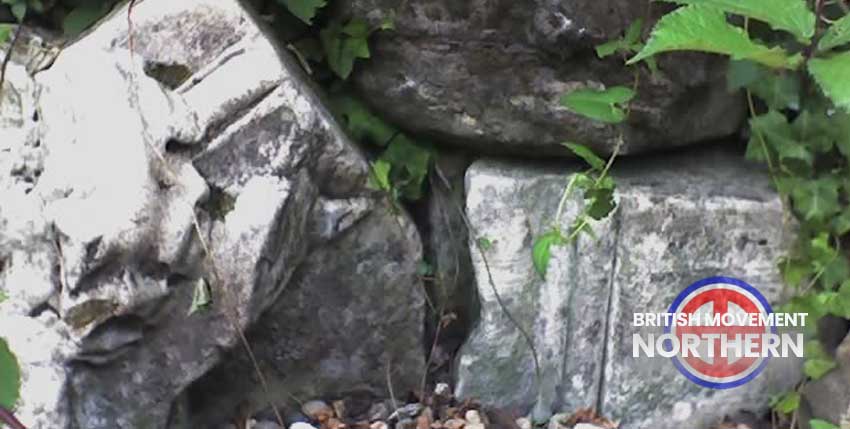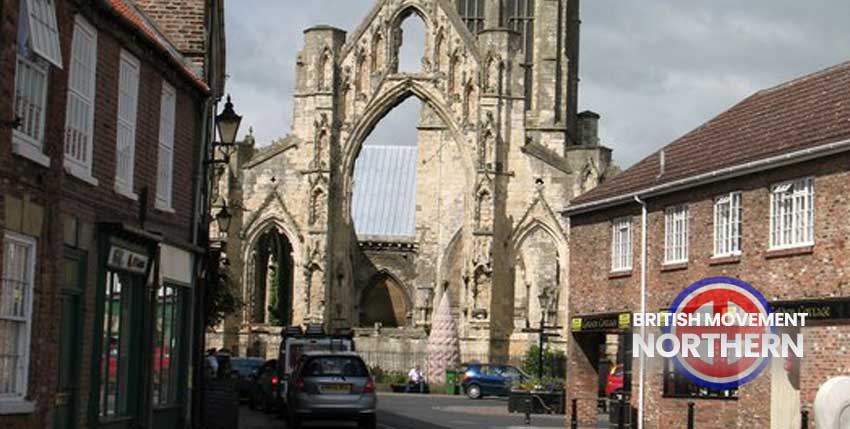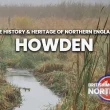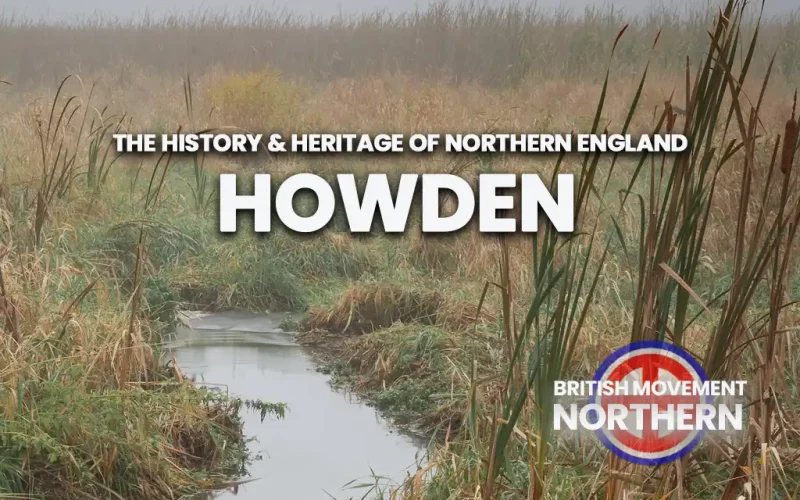Howden is a market town in East Yorkshire and has an interesting history, but Howden really only came into historical prominence during the Anglo-Saxon period, when the settlement was called Haeafuddene. Earlier history of a settlement is unclear, although the modern town lies within the region where in the Iron Age, the Celtic tribe the Parisi ruled and controlled the land as far as the east coast and the Humber estuary.
Little is known about what took place in the area of Howden during the Roman period, but any settlement there would have fallen under the control of the Roman authorities in York (Eboracum).
During the Anglo-Saxon period, the settlement was initially under the control of the Kingdom of Deira, which later united with the Kingdom of Bernicia to become the Kingdom of Northumbria. The first settlement was sited on the raised land above the River Derwent, the place name is believed to be taken from the word “halh” which meant a raised area of land in the curve of the river. This is also thought to be the origin of Hailgate in the town (Halh street).
Christianity and the early church claimed a saint born in the town, an early ecclesiastical chronicle claims Saint Osana, an Anglo-Saxon noble woman born in Howden around the year 698 AD. Historians believe that she was the daughter of King Aldfrith and Queen Cuthburga of Northumbria, and sister of the later King Osred of Northumbria. Her mother was later sanctified as Saint Cuthburga. Little is known about the life of Osana, but she died in 750 AD and was buried in a tomb within the church of Howden. Many years later a bizarre miracle was associated with Osana’s tomb and she was later accorded sainthood by the church.
As with all the territory east of the Pennines, Howden was ruled from York, a situation which did not change when the region came under Danish control in the 9th century. What is now East Yorkshire was part of the large swathe of Northern and Eastern England to be known as the Danelaw. After the death of Erik Bloodaxe, the last Viking king of York, the region returned to Anglo-Saxon rule.
Howden is referenced in the Anglo-Saxon Chronicles, specifically during the 10th century, and in the year 959 AD King Edgar of Mercia and Northumbria counted the town as part of his kingdom. Politically and administratively, the town of Howden fell under the ‘Wapentake of Howdenshire’, within the East Riding of Yorkshire, which covered a number of smaller surrounding settlements and farm steads as well as Howden itself. The eight or nine dependent villages were designated as part of the land charter “belong to Howden with sake and soke”.
After the Norman Conquest and the eventual subjugation of the North, William the Conqueror gave Howden to the Bishop of Durham in 1080, thereby rewarding the Bishop of Durham with the rents and taxes of the town. The importance of the town to the church was reflected by the building of a bishop’s palace in Howden. A grammar school linked to the church was founded in Howden in 1265.
By one of the bizarre twists of history resulting from this, the Wapentake of Howdenshire remained an enclave of County Durham until 1846, a strange arrangement that part of the East Riding of Yorkshire was administered by one of the ‘Prince Bishops of Durham’ for almost 800 years!
The early church had a major stronghold in Howden, and the influence of the Bishop of Durham ensured that there was a significant ecclesiastical presence in Howden. In 1228 work began to build Howden Minster, although there were many interruptions and expansions of the original plans to the point where the Minster was not finally completed until the 15th Century.

Nevertheless, in the medieval period, Howden was a noted site of pilgrimage and across the late 13th century, throughout the 14th century and into the 15th century. Pilgrimages were made to the tomb of John of Howden, a former senior cleric at Howden Minster. After his death in 1275, miracles were reported at his tomb and a shrine was built in the grounds of Howden Church to honour John of Howden.
In the year 1200, King John granted Howden a Market Charter and established the town as a ‘market town’, this also allowed for an annual fair every September. Unfortunately for Howden, the reign of King Henry VIII brought the Reformation and the Dissolution of the Monasteries, which impacted the wealth of the church and also took away much of the church property in Howden. The confiscation of church property in Howden also saw the demolition of the shrine dedicated to John of Howden together with a major part of the town church.

In the 17th Century, Howden became known as a centre for the sale and trading of horses and the annual Howden Fair in September became a noted horse fair, and the importance of the Horse Fair attracted buyers from across Britain and Western Europe. Unfortunately for the town in August 1665, King Charles II issued a Royal proclamation cancelling Howden Fair because of an outbreak of the plague in London and the fear that London horse dealers travelling to Howden might spread the plague nationally.
Howden became an important coaching station for the coach road routes to Hull and the Booth Ferry crossing point on the River Humber, by the end of the 18th century there were more than 20 inns in Howden to service the stage coach trade.
The Industrial Revolution had a limited impact on Howden, it remained a market town, but the roads were improved and the railways reached the town in the 1840’s, linking Howden to Hull and other parts of Yorkshire. Howden remained largely a market town and as the port of Goole developed and expanded, Howden lost a good deal of trade and investment to Goole.
Howden is a White town; the most recent census data, (2011) gives the population break down as White British and other White nationalities, which includes Irish and Eastern Europeans as 97.9% White, a clear recommendation.
Resources
Top Image: British Movement Northern.
Middle Image: The Halo at English Wikipedia, Public domain, via Wikimedia Commons.
Lower Image: Gordon Hatton / Towards the Minster from Hailgate.
The British Movement welcomes articles for possible inclusion on this site from members and supporters across the North of England. Please remember that we have to operate within the laws of this country; we will not include any content that is against the current laws of the United Kingdom. News reports should be topical and be relevant to the regions covered by this website.











